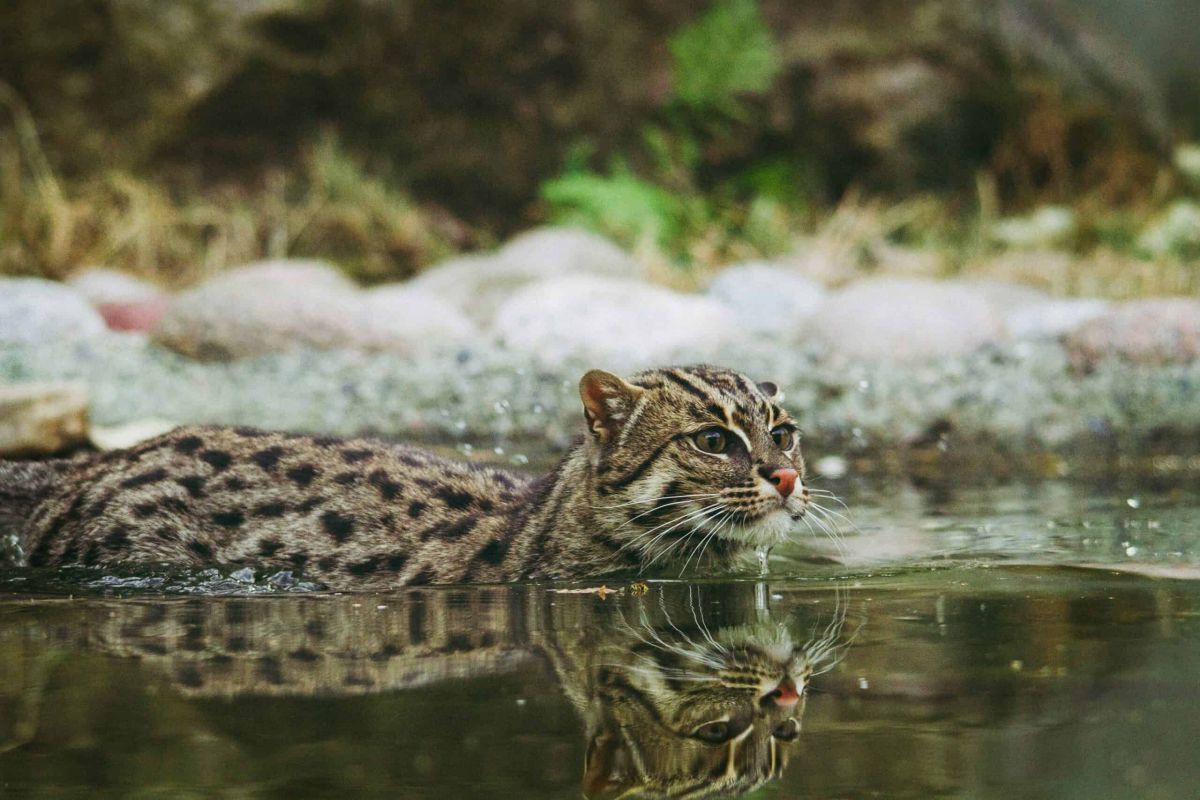The Fishing Cat: Nature’s Aquatic Hunter

Many cats are known for their agility, grace, and predatory prowess, but few are as unique and fascinating as the fishing cat (Prionailurus viverrinus). This medium-sized wild cat is primarily found in the wetlands and mangroves of South and Southeast Asia, and it has developed specialized adaptations that set it apart from its feline relatives. Let’s look into the life, habitat, and conservation status of the fishing cat, exploring why it is a captivating subject for wildlife enthusiasts and conservationists alike.
A Unique Habitat
Fishing cats thrive in aquatic environments, predominantly inhabiting marshlands, swamps, and mangrove forests. Their range extends across countries like India, Sri Lanka, Bangladesh, Nepal, Thailand, and Indonesia. Unlike other cats, which prefer dry, terrestrial landscapes, fishing cats are perfectly adapted to wet environments. They have partially webbed paws, allowing them to maneuver effectively through water, and their long tails help them maintain balance when navigating slippery surfaces.
The primary diet of fishing cats consists of fish, which they skillfully catch using a unique hunting technique. They will wade into shallow waters, using their forepaws to swat at fish, or they may wait patiently at the water’s edge for their unsuspecting prey. In addition to fish, fishing cats will also dine on amphibians, birds, and small mammals, making them versatile hunters within their ecosystem.
Behavioral Characteristics
Fishing cats exhibit several interesting behavioral traits that enhance their survival in aquatic environments. They are primarily nocturnal hunters, which means they are most active during the night when their prey is also on the move. Their keen sense of hearing and excellent night vision allow them to navigate the darkness of their wetland homes.
One of the most remarkable features of fishing cats is their vocalizations. Unlike most domestic cats, fishing cats are known for their unique calls, which can sound more like a dog’s bark or a series of high-pitched yelps. These vocalizations play a vital role in communication, especially during mating season.
Fishing cats are also highly territorial animals. Males typically establish larger territories that overlap with those of several females. To mark their territory, they engage in scent marking through urine and scratch markings on nearby trees or plants, signaling their presence to others.
Conservation Status
Despite their fascinating adaptations, fishing cats face numerous threats that have contributed to their decline in the wild. Habitat destruction due to urbanization, agriculture, and pollution poses significant challenges for their survival. Wetland drainage and deforestation have fragmented their habitats, limiting their access to the resources they rely on.
Additionally, fishing cats are often victims of human-wildlife conflict. As they venture into human settlements in search of food, they may be seen as pests, leading to retaliatory killings. Furthermore, entanglement in fishing nets and poaching for their pelts further threatens their population.
The International Union for Conservation of Nature (IUCN) has listed the fishing cat as “vulnerable,” highlighting the need for immediate conservation efforts. Various wildlife organizations are working tirelessly to protect and preserve their habitats, educate local communities about the ecological importance of fishing cats, and implement conservation strategies that promote coexistence.
Conservation Efforts and How You Can Help
As awareness of the fishing cat’s plight grows, so do the conservation efforts aimed at securing their future. Initiatives include habitat restoration, creating protected areas, and encouraging sustainable fishing practices that reduce bycatch. Engaging local communities in conservation efforts is crucial, as it fosters a sense of stewardship over these remarkable creatures.
Individuals can also contribute to the conservation of fishing cats by supporting organizations that focus on wildlife preservation, participating in citizen science projects, and spreading awareness about the importance of wetlands and their inhabitants. Simple actions like responsible tourism can help promote the sustainable use of natural resources while highlighting the importance of protecting the habitat of the fishing cat.
Conclusion
The fishing cat is an extraordinary species that embodies the complexity of nature’s adaptations and the intricate balance within ecosystems. By understanding and appreciating these remarkable aquatic hunters, we can take steps towards preserving their habitats and ensuring their survival for generations to come. As we continue to learn about the fishing cat and its role in the environment, it becomes increasingly clear that these enigmatic felines are worth every effort to protect.



